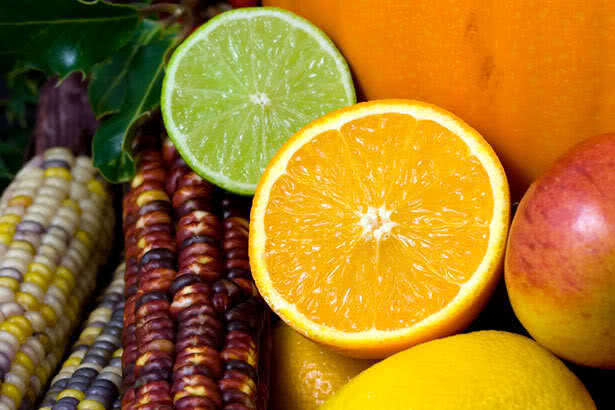 After years of playing perennial number-two to Coke (NYSE: KU), PepsiCo (NYSE: PEP) is gearing up for another shot at the China market through a new tie-up with instant noodle juggernaut Tingyi (HKEx: 322). The deal looks interesting on paper, though Pepsi will need to address the much more fundamental issue of its pathetic marketing in China if it really wants to improve its fortunes in what will soon become the world’s top beverage market. Let’s look at the deal first. Under the agreement, Pepsi will hand over its China bottling operations to Tingyi in exchange for a small stake in the company’s drinks joint venture with Japan’s Asahi (Tokyo: 2502). (English article). The deal not only gives over Pepsi’s money-losing bottling operation to a more seasoned operator, whose Masterkong brand is practically synonymous with instant noodles in China, but also gives Pepsi an important new local partner that better understands the market and whose highly developed sales channels will also be a valuable new resource. But rather than celebrate too much, Pepsi needs to address the much more fundamental issue of marketing. Despite its enviable position as sole soft drink supplier to KFC, easily China’s leading fast food operator, Pepsi’s name remains a relative unknown in China to date due to lack of effective marketing. Its main juice drink product, branded under the Tropicana name, is also a relative unknown. By comparison, Coke invented the word “cola” in China, and its Minute Maid Pulpy brand orange juice drink developed just for the market is the company’s first $1 billion brand developed outside its home US market. Pepsi needs to grasp the importance of marketing in China and use campaigns like those used by Coke, KFC and McDonalds (NYSE: MCD) to bring more excitement to its brands in the market. Otherwise, this latest tie-up with Tingyi could end up as hollow as an empty bowl of noodles.
After years of playing perennial number-two to Coke (NYSE: KU), PepsiCo (NYSE: PEP) is gearing up for another shot at the China market through a new tie-up with instant noodle juggernaut Tingyi (HKEx: 322). The deal looks interesting on paper, though Pepsi will need to address the much more fundamental issue of its pathetic marketing in China if it really wants to improve its fortunes in what will soon become the world’s top beverage market. Let’s look at the deal first. Under the agreement, Pepsi will hand over its China bottling operations to Tingyi in exchange for a small stake in the company’s drinks joint venture with Japan’s Asahi (Tokyo: 2502). (English article). The deal not only gives over Pepsi’s money-losing bottling operation to a more seasoned operator, whose Masterkong brand is practically synonymous with instant noodles in China, but also gives Pepsi an important new local partner that better understands the market and whose highly developed sales channels will also be a valuable new resource. But rather than celebrate too much, Pepsi needs to address the much more fundamental issue of marketing. Despite its enviable position as sole soft drink supplier to KFC, easily China’s leading fast food operator, Pepsi’s name remains a relative unknown in China to date due to lack of effective marketing. Its main juice drink product, branded under the Tropicana name, is also a relative unknown. By comparison, Coke invented the word “cola” in China, and its Minute Maid Pulpy brand orange juice drink developed just for the market is the company’s first $1 billion brand developed outside its home US market. Pepsi needs to grasp the importance of marketing in China and use campaigns like those used by Coke, KFC and McDonalds (NYSE: MCD) to bring more excitement to its brands in the market. Otherwise, this latest tie-up with Tingyi could end up as hollow as an empty bowl of noodles.
Bottom line: Pepsi’s new tie-up with China’s top noodle maker won’t help its lackluster performance unless it steps up its marketing efforts.
Related postings 相关文章:
◙ Coke’s China Formula: A Pulpy and a Smile 可口可乐入乡随俗显成效
◙ Growth-Hungry McDonalds Explores Risky Franchising Route
◙ Yum Feasts on China, Still Eying Little Sheep 百胜依然觊觎小肥羊

 More than half a year after announcing its plan to purchase top Chinese hot pot chain Little Sheep (HKEx: 968), Yum Brands (NYSE: YUM), owner of the KFC and Pizza Hut chains, has learned it will have to wait just a bit longer for the anti-monopoly regulator’s decision on the deal — an potentially ominous sign for a regulator that has shown a past tendency to consider nationalistic elements alongside commercial ones in such deals. But at the end of the day, the fact that the regulator hasn’t vetoed this deal yet indicates some debate is probably taking place in the organization, and I still think the chances of an approval are greater than 50 percent, especially as China tries to show its commitment to fair trade in light of US Congress legislation that would punish Beijing for manipulating its currency. According to a new statement filed by Little Sheep to the Hong Kong Stock Exchange, the initial 30 day period for China’s Commerce Ministry to consider Yum’s purchase, worth some $500 million, ended on July 27. (
More than half a year after announcing its plan to purchase top Chinese hot pot chain Little Sheep (HKEx: 968), Yum Brands (NYSE: YUM), owner of the KFC and Pizza Hut chains, has learned it will have to wait just a bit longer for the anti-monopoly regulator’s decision on the deal — an potentially ominous sign for a regulator that has shown a past tendency to consider nationalistic elements alongside commercial ones in such deals. But at the end of the day, the fact that the regulator hasn’t vetoed this deal yet indicates some debate is probably taking place in the organization, and I still think the chances of an approval are greater than 50 percent, especially as China tries to show its commitment to fair trade in light of US Congress legislation that would punish Beijing for manipulating its currency. According to a new statement filed by Little Sheep to the Hong Kong Stock Exchange, the initial 30 day period for China’s Commerce Ministry to consider Yum’s purchase, worth some $500 million, ended on July 27. (
 A new flurry of reports about mislabeled products at some of Wal-Mart’s (NYSE: WMT) China stores would be almost comical if they weren’t true, spotlighting just how sensitive the issue of food safety and false advertising has become in the country. The latest media reports say some Wal-Mart store managers have been detained and more than a dozen stores temporarily closed in this new crisis. And the reason for all the brouhaha? Believe it or not, it’s all because someone discovered that some pork products were falsely labeled as “organic” when in fact they weren’t. (
A new flurry of reports about mislabeled products at some of Wal-Mart’s (NYSE: WMT) China stores would be almost comical if they weren’t true, spotlighting just how sensitive the issue of food safety and false advertising has become in the country. The latest media reports say some Wal-Mart store managers have been detained and more than a dozen stores temporarily closed in this new crisis. And the reason for all the brouhaha? Believe it or not, it’s all because someone discovered that some pork products were falsely labeled as “organic” when in fact they weren’t. ( world economy struggles out of recession, Coke notched 21 percent growth in China in the first half of the year with unit sales surpassing 1 billion — equal to its annual sales for the market just 5 years ago. Clearly there’s plenty of room for growth, as Coke, despite its position as China’s largest software seller, still only has a relatively modest 17 percent of the market. What’s most interesting to me in this story is the fact that earlier this year Coke scored an unusual first in China with Minute Maid Pulpy, which claimed the honor of becoming the company’s first billion-dollar drink developed outside the US. (
world economy struggles out of recession, Coke notched 21 percent growth in China in the first half of the year with unit sales surpassing 1 billion — equal to its annual sales for the market just 5 years ago. Clearly there’s plenty of room for growth, as Coke, despite its position as China’s largest software seller, still only has a relatively modest 17 percent of the market. What’s most interesting to me in this story is the fact that earlier this year Coke scored an unusual first in China with Minute Maid Pulpy, which claimed the honor of becoming the company’s first billion-dollar drink developed outside the US. (